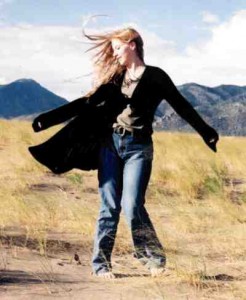Brief by Central Staff
Colorado Heraldry – April 2007 – Colorado Central Magazine
Colorado now has two official state songs. The new one, adopted by a legislative resolution in March, is “Rocky Mountain High” by John Denver. The old one, “Where the Columbines Grow,” was written in 1915 by A.J. Fynn (not Flynn, though it’s often misspelled that way).
There was a minor bit of controversy in the General Assembly. Does the song encourage drug use with lines like “Friends around the campfire, and everybody’s high” ? Sen. Bob Hagedorn, the Aurora Democrat who sponsored the measure, said it referred to the “natural high” of body-produced endorphins. “We could be talking about guys who’ve been fishing all day,” Hagedorn said. “If I thought there was anything in that song about the use of drugs or encouraging the use of drugs, I would never have run the resolution.”
Even so, Rep. Debbie Stafford, an Aurora Republican, pushed an amendment (which was defeated) to specify that the song was about physical elevation (Colorado is, after all, the state with the highest average elevation) “and in no way reflects or encourages drug use.”
Clearly, you could argue that the song encourages drug use. Or that it encourages consumption of alcohol. Or that it merely reflects what some Coloradans did, and probably still do, around campfires. Or that a “Rocky Mountain High” is a “natural high” (although the lyrics to Denver’s “Poems, Prayers and Promises” talk about hanging around a fire “While my friends and my old lady sit and pass the pipe around,” which doesn’t sound entirely natural, but perhaps that was just a metaphor — or Denver was alluding to some sort of Native American ceremony).
Actually we don’t care one way or another. (We do, however, predict that soon singing the Colorado State Song will become far more popular at teen woodsies, since “Rocky Mountain High, Colorado; Rocky Mountain High, High Colorado…” does sound more cheering than the lyrics of “Where the Columbines Grow.”
However, you can read all sorts of things into any song lyrics. Consider these words from our old state song:
The bison is gone from the upland,
The deer from the canyon has fled,
The home of the wolf is deserted,
The antelope moans for his dead,
The war whoop re-echoes no longer,
The Indian’s only a name,
And the nymphs of the grove in their loneliness rove,
But the columbine blooms just the same.”
Tis the land where the columbines grow,
Overlooking the plains far below,
While the cool summer breeze in the evergreen trees
Softly sings where the columbines grow.
Do they imply indifference to the extermination of wolves, antelope, deer, and bison? And encourage acceptance of the genocide practiced at Sand Creek? Do they suggest that Coloradans are heathens who believe in nymphs, which are “female spirits inhabiting and animistically representing features of nature such as wetlands and groves”? Or even more troubling, does this song imply that Denver, Sterling, and La Junta just don’t belong, since they are, after all, out there on those plains?


